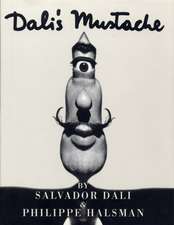Enchanted Ground: André Breton, Modernism and the Surrealist Appraisal of Fin-de-Siècle Painting
Autor Dr Gavin Parkinsonen Limba Engleză Paperback – 7 apr 2021
| Toate formatele și edițiile | Preț | Express |
|---|---|---|
| Paperback (1) | 185.78 lei 3-5 săpt. | |
| Bloomsbury Publishing – 7 apr 2021 | 185.78 lei 3-5 săpt. | |
| Hardback (1) | 781.14 lei 6-8 săpt. | |
| Bloomsbury Publishing – 16 mai 2018 | 781.14 lei 6-8 săpt. |
Preț: 185.78 lei
Preț vechi: 211.90 lei
-12% Nou
Puncte Express: 279
Preț estimativ în valută:
35.55€ • 37.12$ • 29.42£
35.55€ • 37.12$ • 29.42£
Carte disponibilă
Livrare economică 15-29 martie
Preluare comenzi: 021 569.72.76
Specificații
ISBN-13: 9781501375644
ISBN-10: 1501375644
Pagini: 376
Ilustrații: 15 colour and 113 bw illus
Dimensiuni: 152 x 229 x 27 mm
Greutate: 0.7 kg
Editura: Bloomsbury Publishing
Colecția Bloomsbury Visual Arts
Locul publicării:New York, United States
ISBN-10: 1501375644
Pagini: 376
Ilustrații: 15 colour and 113 bw illus
Dimensiuni: 152 x 229 x 27 mm
Greutate: 0.7 kg
Editura: Bloomsbury Publishing
Colecția Bloomsbury Visual Arts
Locul publicării:New York, United States
Caracteristici
Constitutes a unique insight into an entirely overlooked alternative to the standard modernist account of fin-de-siècle art
Notă biografică
Gavin Parkinson is Senior Lecturer in European Modernism at The Courtauld Institute of Art, London, UK. He is the author of Futures of Surrealism: Myth, Science Fiction and Fantastic Art in France 1936-1969 (2015), Surrealism, Art and Modern Science: Relativity, Quantum Mechanics, Epistemology (2008), The Duchamp Book (2008) and Enchanted Ground: André Breton, Modernism and the Surrealist Appraisal of Fin-de-Siècle Painting (2018), as well as the editor of Surrealism, Science Fiction and Comics (2015).
Cuprins
Introduction: Art After Impressionism After Surrealism1. Greengrocer, Bricklayer or Seer? Psychoanalyzing Paul Cézanne2. Painting as Propaganda and Prophecy: René Magritte and Pierre-Auguste Renoir3. Method and Poetry: Georges Seurat's Surrealist Dialectic4. Between Dog and Wolf: Georges Seurat, Brassaï and the City of Light5. Civilization, Realism, Abstraction: Paul Gauguin and Surrealism, 1948-536. Dialectic of Brittany: From Myth to Folklore in Paul Gauguin and SurrealismEpilogue: Disenchanted Ground, or Vincent van Gogh, Antonin Artaud and Magic in 1947 Conclusion: On André BretonBibliographyList of IllustrationsIndex
Recenzii
Parkinson's extensive knowledge of the field allows him to navigate with ease between continents, following the various developments and reception of modern art in the twentieth century. His ability to modify the length of his focus from detailed textual analysis to wider comparative geographical and art historical contexts makes this book one of the most astute on the movement to date.
Enchanted Ground [...] is a work that further confirms Parkinson's reputation as one of the most original of today's writers on Surrealism.
Gavin Parkinson had the novel idea to reconsider the canonical figures of late nineteenth century French painting as they appear within the discourse of Surrealism: Cézanne or Gauguin through Breton or Dalí. His gambit pays off brilliantly. He ferrets out a shadow history of French modernism, tracking long-lost interpretive metaphors that shift from positive to negative and back again. The surrealist alternative to traditional criticism generates an unfamiliar constellation of cultural significance. From out of its obscurity, Parkinson reveals the "mythic, poetic or magic resonance" of the practice otherwise known as modernism.
Gauguin, Cézanne, Seurat-those canonical modernists we thought we knew-are reinvested with myth, magic and poetry in this lively and polemical account of their 'Surrealisation' in the mid-20th century. Parkinson pulls no punches in voting for the Surrealists as the most perceptive interpreters of this alternative cast of 19th-century precursors.
Enchanted Ground highlights Parkinson's skill in asking unexpected questions of modern art, matched with astute answers; and in taking Surrealism seriously, as a source of vivid and relevant ideas rather than just an art movement. This book's great strength lies in shining a searchlight at its material, not simply to look at Surrealism, but look with it and through it, alert to the refractions that illuminate adjacent histories in fresh ways. Enchanted Ground is on high alert to details, anomalies and the overlooked, using them to unpick received wisdom about Surrealism, modernism and art history itself.
Gavin Parkinson's text is a timely reminder that there are other ways of seeing the founding fathers of modernist painting than through the lens of Greenberg's formalism. He explores the posthumous critical fortunes of Cézanne, Gauguin, Van Gogh and Seurat in the writings of the doyen of Surrealism, André Breton. Part intricate historiography, gathering together writings that have hitherto been overlooked because dispersed and difficult of access, Enchanted Ground brings us familiar art from an unfamiliar, indeed magical, Surrealist perspective. This is an arresting, ambitious and important book.
Enchanted Ground [...] is a work that further confirms Parkinson's reputation as one of the most original of today's writers on Surrealism.
Gavin Parkinson had the novel idea to reconsider the canonical figures of late nineteenth century French painting as they appear within the discourse of Surrealism: Cézanne or Gauguin through Breton or Dalí. His gambit pays off brilliantly. He ferrets out a shadow history of French modernism, tracking long-lost interpretive metaphors that shift from positive to negative and back again. The surrealist alternative to traditional criticism generates an unfamiliar constellation of cultural significance. From out of its obscurity, Parkinson reveals the "mythic, poetic or magic resonance" of the practice otherwise known as modernism.
Gauguin, Cézanne, Seurat-those canonical modernists we thought we knew-are reinvested with myth, magic and poetry in this lively and polemical account of their 'Surrealisation' in the mid-20th century. Parkinson pulls no punches in voting for the Surrealists as the most perceptive interpreters of this alternative cast of 19th-century precursors.
Enchanted Ground highlights Parkinson's skill in asking unexpected questions of modern art, matched with astute answers; and in taking Surrealism seriously, as a source of vivid and relevant ideas rather than just an art movement. This book's great strength lies in shining a searchlight at its material, not simply to look at Surrealism, but look with it and through it, alert to the refractions that illuminate adjacent histories in fresh ways. Enchanted Ground is on high alert to details, anomalies and the overlooked, using them to unpick received wisdom about Surrealism, modernism and art history itself.
Gavin Parkinson's text is a timely reminder that there are other ways of seeing the founding fathers of modernist painting than through the lens of Greenberg's formalism. He explores the posthumous critical fortunes of Cézanne, Gauguin, Van Gogh and Seurat in the writings of the doyen of Surrealism, André Breton. Part intricate historiography, gathering together writings that have hitherto been overlooked because dispersed and difficult of access, Enchanted Ground brings us familiar art from an unfamiliar, indeed magical, Surrealist perspective. This is an arresting, ambitious and important book.
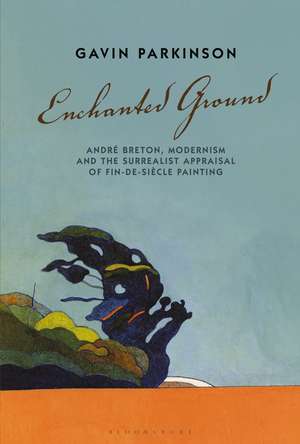
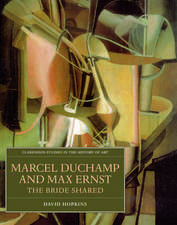

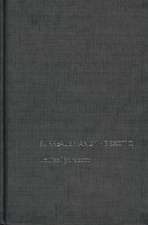
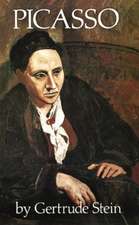




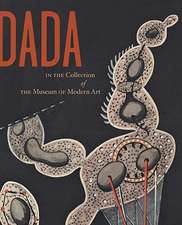

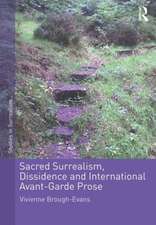


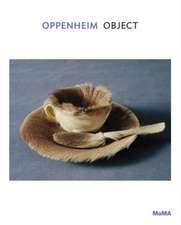
![This Is Dali: 23 Stylish Outfits from Six Simple Patterns [With Pattern(s)]](https://i4.books-express.ro/bt/9781780671093/this-is-dali.jpg)


